We are still staying with the Spanish theme - eating tortilla, drinking Spanish red and generally taking an easy approach to this lockdown. Our Seville gin is coming to an end but there are back ups as you will see from the photographs!! (Thank goodness Jean had pre-lockdown ordered 25 kg of malted granary flour and 12 kg of coffee - we will survive!)
Manyana is a fine Spanish concept only now fully come of age. We came close to going for a walk yesterday, but decided our time would be better spent ordering obscure things from Amazon. We purchased a ladder stay, some sewing cotton, and a small hoover as, since we discovered deep cleaning there are many nooks and crannies, that this crook and nannie need to probe.
But when we do go out we bear in mind that for many years our friend Stuart, has told us it’s very important to avoid the assassins and never to take the same route home and back again. Now, what was a joke has become some sort of reality as we avoid anywhere even slightly busy, cross roads to distance from oncoming pedestrians and strive (and stride) to make our walks interesting.
Obviously there are some very nice public gardens out there in Surrey but right now we only get to see our own and a few front gardens in the near neighbourhood.
Kingston is well served for avoidance tactics; there are a surprising number of back lanes and pathways and the urban landscape makes an almost infinite number of circular walks easy. It's not clear why these lanes exist, presumably left overs from the ancient town. And it is an ancient town. Wiki tells us: Kingston was called Cyninges tun in 838 AD, Chingestune in 1086, Kingeston in 1164, Kyngeston super Tamisiam in 1321 and Kingestowne upon Thames in 1589. The name means 'the king's manor or estate' from the Old English words cyning and tun. It belonged to the king in Saxon times and was the earliest royal borough.
To continue the wiki-plunder we have our share of notables: John Galsworthy the author was born on Kingston Hill and Jacqueline Wilson grew up, and went to school in Kingston and lived here until recently. Both are commemorated at Kingston University.
Also commemorated at the University is photographer Eadweard Muybridge who was born here and changed the spelling of his first name in reference to the name of the Saxon king on the Coronation Stone. He was a pioneer in the photography of the moving image, commemorated in several places by murals. Interesting short online exhibition here: Muybridge
A few of the lanes criss cross the Hogsmill River, and some of the images below show how convincingly rural it looks, at least in carefully composed photographs! The Hogsmill River rises in Ewell, heads northwards and eventually flows under the Clattern Bridge to join the Thames at Kingston. The Hogsmill is a bit of bio-diversity hot spot and a lot of work is done to protect its banks and the flora and fauna. A recent project saw the installation of 'eel tiles' under the bridge to allow the endangered European eel to get past the steep smooth concrete.
Pollution, overfishing, global warming, disease and habitat loss have all contributed to the demise of this charismatic species. The eel has a fascinating and mysterious life cycle in which it starts life in the Sargasso sea as a larvae, migrates across the oceans via currents to European rivers, metamorphosing a couple of times on the way to become glass eels and then elvers.
Once in rivers, such as the Thames and the Hogsmill, they migrate upstream to find habitat in which to grow and develop into yellow eels. After 5-20 years of life in rivers such as the Hogsmill they metamorphose again into silver eels and travel back to the Sargasso Sea to complete their life cycle. Here is a link to a short film about the Hogsmill narrated by Griff Rhys Jones: YouTube
Another claim to fame for the Hogsmill: John Everett Millais’ Ophelia, was painted by the river in Six Acre Meadow in Old Malden in 1851.The painting depicts the drowning of Shakespeare’s Ophelia who is the daughter or Polonius, sister of Laertes and a potential wife of Hamlet. As a young, tragic beauty, Ophelia has long been a popular subject of artists but it is Millais’ work which has become the iconic image of Ophelia we know so well.
After a walk somewhat longer in duration than our 60 minutes we have castanets far enough and return home for flamenco and tapas. Or our (not so) near equivalent. Sol beer, Bombay mix and the daily dance around the podiums at Downing Street.

 Kingston upon Thames, England, United Kingdom
Kingston upon Thames, England, United Kingdom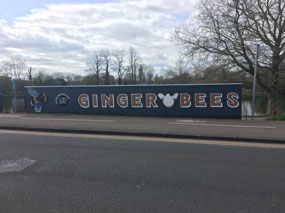

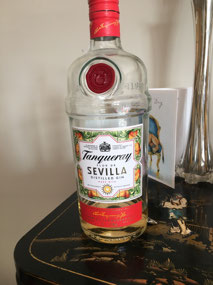


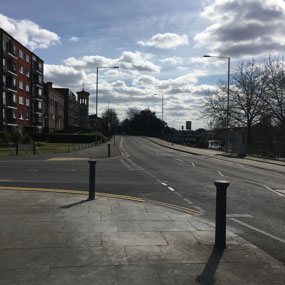
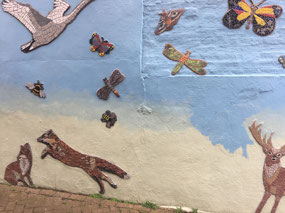
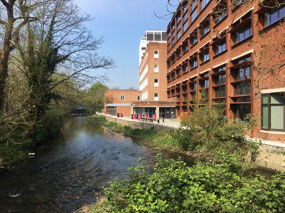
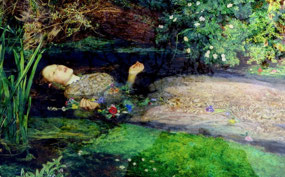
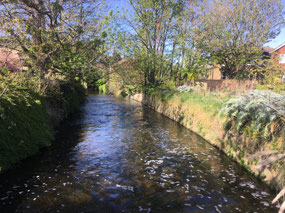
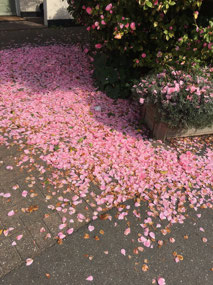
Clare
2020-04-20
Very informative - thank you!
Di
2020-04-20
When I was looking into the history of our (now 100 year old) houses a year or so ago, one of my sources were the reports of the Public Health Officer for Kingston. In one of his these he justified the expense of creating (one of the first) a water treatment works in Kingston, because of all the waste and sewage coming down the Hogsmill from Ewell and Epsom, polluting Kingston's obviously much cleaner waters! The paths around the river on the "other" side of Penrhyn are indeed charming.
maire
2020-04-20
I enjoyed this article very much on the local info, looking forward to the next one.
Frances W
2020-04-20
My goodness, how times are changing, even Intermarché has flavoured gins now, some a little suspect.....!!
Frances W
2020-04-20
...by the way, the painting 'Ophelia' is my favourite of all time, ever......